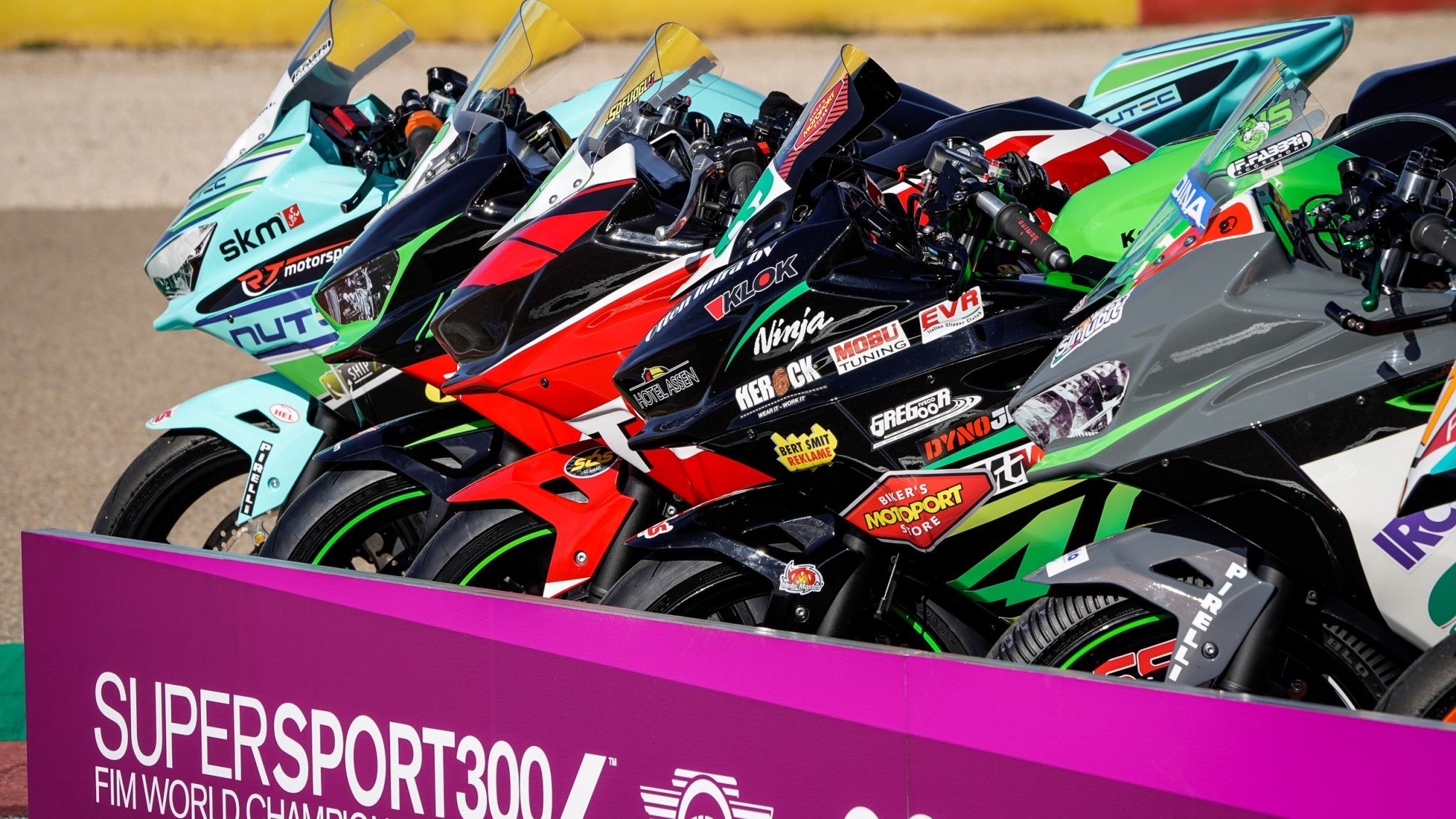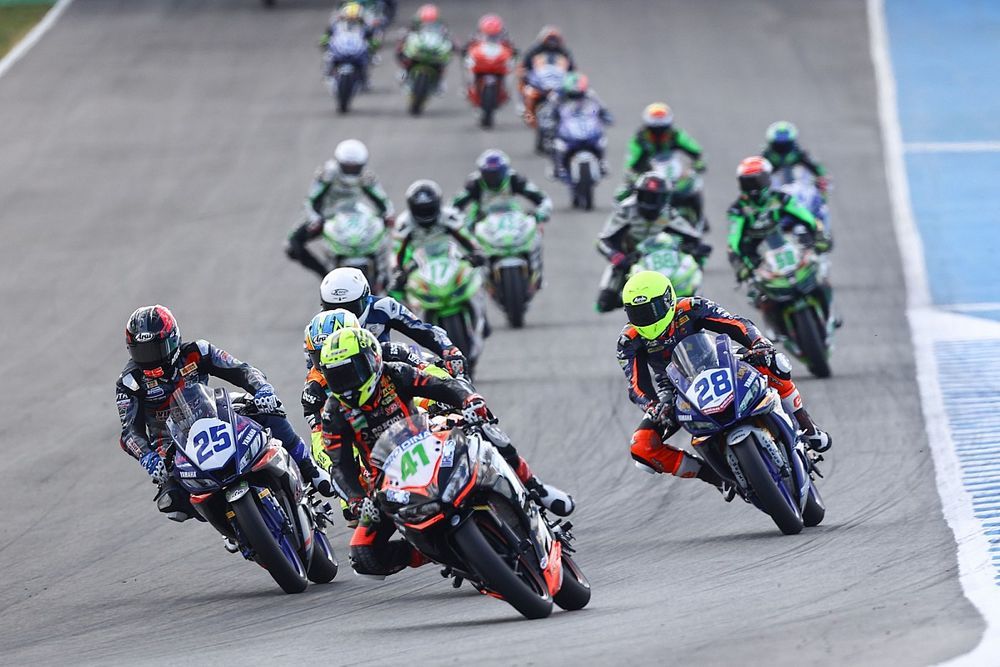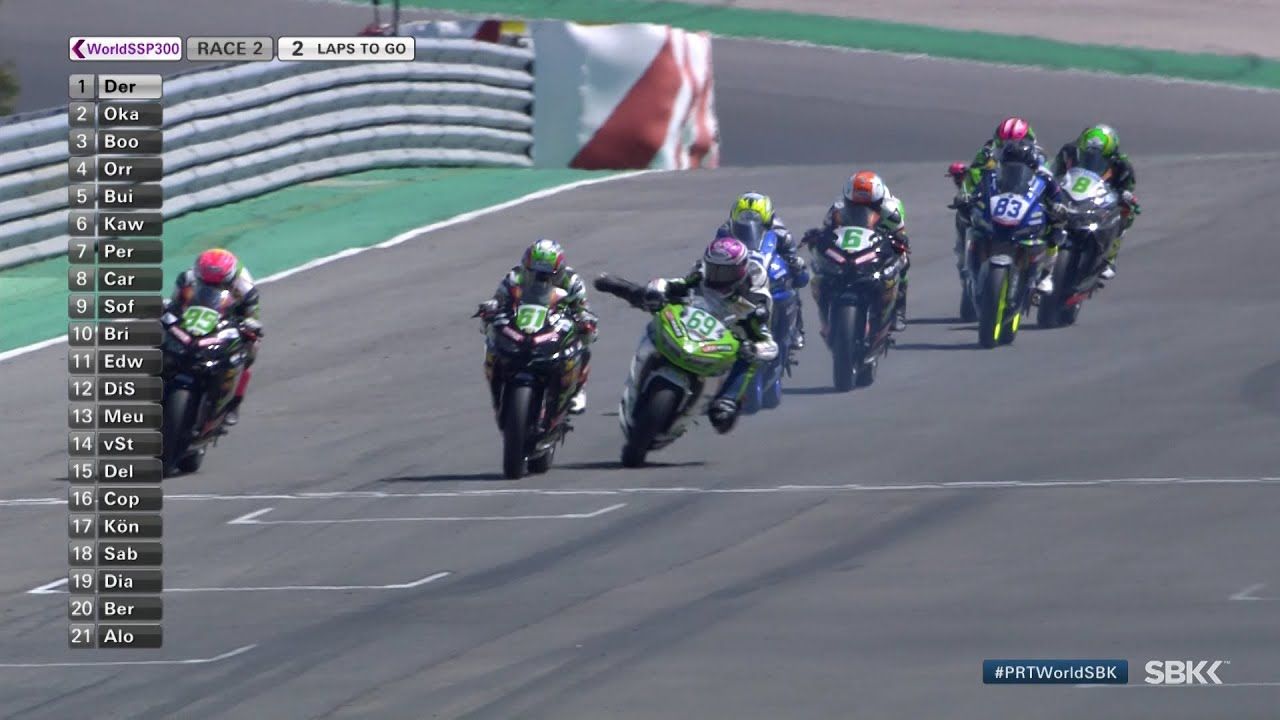Argument has raged recently about how young is too young to race at international level. New rules introduced to the 300cc World SuperSport class are aimed at tackling the problems of safety.
FIM Introduces New Rules to Make Junior Formulae Safer
THE FIM (Fédération Internationale de Motocyclisme) has responded to calls from riders, teams and fans to overhaul the rules for junior racing series, following the death of young rider Dean Berta Vinales in September.
The nature of racing in the junior classes has long been seen as a problem: huge grids of young riders on bikes with similar performance, desperate to get noticed and seemingly fearless. Massively close racing, with packs of dozens of bikes circulating in close formation meant that, should a rider fall, it was very likely they would be hit by following bikes.
It was clear that something had to be done to protect the riders from themselves. The question was what?
Now, the FIM has announced a raft of new rules. Firstly, grid sizes will be reduced to 30 riders plus two wild card entries. Whilst that is not a huge differences to the 35-or-more riders on grids this year, it's a step in the right direction.
More importantly, however, is the raising of the minimum age to 18, from 16. While that doesn't necessarily guarantee safer racing, it is hoped that that two-year difference will mean that the riders are a lot more mature and able to use better judgement. Whether that will happen in reality is another thing: once the flag drops at the start of a race all common sense can easily fly out of the window.
Another measure is to adjust the qualifying requirements. At the moment, a rider needs to be within 107% of the pole-sitter's time in order to qualify. That will be reduced to 105% to ensure that as many riders as possible are at a similar level and pace.
Rider airbags will now be mandatory for every class of racing: previously, the use of such equipment was merely recommended in WorldSSP 300. This seems to be proper progress as accidents can never be completely eliminated but protecting the rider as much as possible has to be a priority. Also, after any accident, new regulations state that the rider's helmet must go for post-crash analysis before being returned to the rider, not so much to make sure it is still safe but to gather data on helmet performance which can be fed back to the manufacturers.
On the bike front, messages from the pits or race control can now be flashed onto the bike's dashboard, warning the rider of yellow flags or on-track dangers before they come upon it at racing speed.
Are these measures enough? Only time will tell. Racing can never be made completely safe but at least the powers-that-be seem to be doing as much as they can, short of banning racing altogether.



